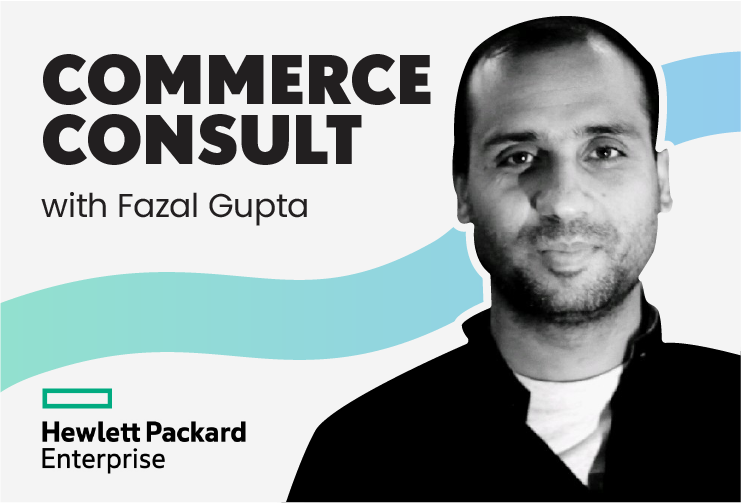It’s no secret that Salesforce is an industry giant for a reason. They all but wrote the book on foundational configure, price, quote (CPQ) software as we know it, and have gained widespread brand recognition for their breadth of product offerings for newcomers and industry veterans alike.
Aside from their core catalog of business solutions, they like to keep their fingers on myriad pulses to identify larger trends in sales, tech, manufacturing and more. And what they take a look at, we take a look at.
Global supply chain issues have been a hot topic as of late, with more and more accounts of compounding problems coming in by the day.
A main concern surrounding supply chain operations for sellers is guaranteeing inventory – both in the amount necessary to keep business going at profit, and within the timeline agreed upon by their clients at the time of sale.
Manufacturers in particular need as much help as they can get right now in the wake of these unprecedented supply chain issues – and an ever-changing market landscape that is constantly moving away from traditional sales.
Recently, Salesforce VP, B2B Commerce Strategy Andy Peebler, offered his thoughts on how manufacturers – original equipment manufacturers (OEMs) particularly – can best navigate the market turbulence caused by supply chain disruptions.
His prescription? Sell online.
Those with an existing digital footprint have a leg up on the competition, but still have a long way to go in terms of refining and troubleshooting the experience for their buyers. Those without are in prime position to take the leap and start meeting both consumerized buyers and an unsteady market where they are.
We had questions about the current state of manufacturing as related to meeting buyer preferences. The study we commissioned gave us answers we never expected. Find our full report, downloadable for free, at https://learn.logik.io/state-of-b2b-ecommerce
If you want to make it through this industry lull, your manufacturing eCommerce environment needs to be architected in a manner that accommodates the dynamic nature of a sales funnel heavily impacted by supply chain inconsistencies.
To do so successfully, you’ll need to fully understand not only the consumerized expectations your buyers have, but also the construction of your tech stack to meet those non-negotiables.
It may sound daunting, but with a duo like Logik.io Commerce Engine and Salesforce CPQ, it won’t be as intense as you think.
Supply Chain Shortcomings
Whether the couch you ordered back in April still hasn’t left the warehouse across state lines, or your view at the beach has been peppered with cargo ships waiting at port for weeks, it’s likely the supply chain issue has touched you in one way or another.
(Yes – the lack of bone-in wings at your local happy hour can be chalked up to the supply chain, too.)
JP Morgan has identified five main pockets of stress contributing to the delays, including:
- Disruptions to air and rail freight
- Port congestion across the United States
- International labor shortages
- Political instability of varying degrees
And for every day-to-day inconvenience caused by the larger circumstances, manufacturers suffer the aftershock.
While things looked promising for a moment at the start of the year, there hasn’t been a substantial rebound in any of these areas as of yet.
The reality of the supply chain isn’t going to get better overnight, or even over coming months, and buyers shopping in the interim still expect – and deserve – an honest, accurate, streamlined storefront from B2C and B2B companies alike.
Fluctuating inventory and delayed shipping timelines are only two pieces of the larger supply chain puzzle. Manufacturers are facing decisions to move away from a la carte pricing for in-demand, complex parts, implementing unit minimums that make more sense for their production lines.
Trying to keep track of real time delays, changing inventory units, pricing conventions, shipping protocols, customs processes, and the rest without supporting tech is all but a recipe for disaster.
But, the right tech stack and usable software can take such modifications and complex rules in stride.
The question is no longer whether you should be taking your manufacturing business online – the pressing matter is simply when.
Consumerized Buyer Expectations
We have seen a notable increase in available eCommerce environments for all types of sellers across the last three years, thanks to the in-person sales hiatus that came as a byproduct of COVID-19 pandemic measures. Buyers got used to the new amount of vendors at their literal fingertips, and quickly began expressing “consumerized” preferences in B2B settings.
Consumerized buyers share a common set of expectations that determine where they will spend their money. They gravitate toward self-directed environments and prefer guided selling technology interfacing to traditional sales reps, while looking to customize their cart in real time.
In the absence of a physical showroom, advanced product configuration software and 3D visual renderings act as satisfactory substitutes for the discerning buyer. If pricing information and adjustments are present in these settings, all the better as they move through to order.
Logik.io Commerce Engine has partnered with Threekit to deliver fast, engaging customer experiences through visual commerce. You won’t get a dynamic 3D experience like this anywhere else – see for yourself. https://www.logik.io/news/threekit-partnership.
Because the market is so saturated, buyers hold the final power in determining which seller is deserving enough to win their patronage. If you’re able to win their loyalty, they have an incredibly high reorder rate – almost 90%, according to a PwC survey.
With just a little bit of legwork at the start of your eCommerce journey, you can align yourself with the consumerized buyer, and give them reason to keep coming back.
Tech Stack Architecture
The tech stack rule of thumb is that whatever you implement should make your life – plus the life of your buyers, IT teams, and administrators – easier in the long run.
With a Commerce Logic Engine like ours, you can leverage what Peebler highlights as one of the key components to digital success – automation.
Referencing a Salesforce survey, he notes that 97% of digital sellers are anticipating larger, more complex orders to come through their storefronts over the course of the next two years. In conjunction with the supply chain issues projected out through at least the turn of the year, this means that having the right tech system behind you is more mission critical than ever.
Luckily, advances in the world of automation are coming quickly and consistently – like in the case of our recently launched “Sets,” which specifically work to increase rule reusability and decrease overall maintenance.
Being able to adjust product rules, restrictions, requirements and recommendations without getting into fully custom coding or script also means you can get updates out to your buyers as quickly and easily as they come to you. It’s a true set-and-forget mentality.
Optimizing search results through guided selling interactions and internally dictated logic takes pressure off of buyers who may not have full product knowledge, and reinforces your position as the ultimate subject matter expert on how to best serve your clientele. You can even set up automated upsell, bundle or add-on triggers to expose buyers to just the right products at just the right time.Logik.io is proudly native to the Salesforce platform, and we have seen the ways in which their Manufacturing Cloud begins to support the unique CPQ needs of manufacturers themselves. Combined, we can supercharge the Configuration process, helping you sell more, sell faster, and maintain less.


%20FY25%20Logik.io%20Brand%20Elements/Brand%20Illustrations/%5BFY25%5D%20Logik.io%20Brand%20Illustration%20-%20Working%20Together%20in%20Configuration.png)